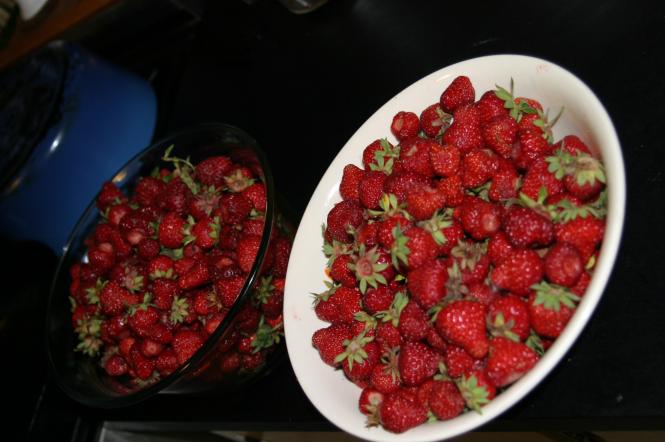Urban gardens and even urban farms are on the rise. All you have to do is look around and you start to notice food growing everywhere: abandoned lots, flower pots, next to bike paths, on roofs and right next to major highways. People seem to love the challenge of producing food, not to mention the peace of mind that comes with working a garden. Even those of us who at times seem to be in constant battle with weeds, bugs, rabbits and other pests can forget about all of that struggle when it comes time to pick a ripe tomato or harvest green beans.
Herbs are another gem, growing perennially wherever the is a square inch of soil but often taking over half a yard. Every year at the local farmers market, I watch as city dwellers swipe up boxes of oregano, thyme, tarragon and sage. And why not? Once established these herbs can persist for years with little care while yielding great rewards.
The question I want to ask? Well, what happened to fruit? With all of this attention on horticulture, it can be surprising to hear so little about growing your own fruit. With this years harvest coming in so strong, I started calling my yard the Vincent avenue orchard. While totally ridiculous, it speaks a little to the surprising volume of fruit that I can pull out of my small patch of green space.
It all started innocently enough. There was an unsightly spot in my backyard and rather than fix it, I decided that I would try and hide it. Then, like so often happens to me in garden stores and nurseries, I went in without a plan and allowed myself to wander the aisles with dreams that could have filled four acres of land. What pulled me out of my reverie was the small, unassuming assortment of raspberry plants. They sat there fruitless but full of hope. Three of the Caroline variety found their way into my cart.
The method for obtaining strawberries was much the same. I think that I was actually looking for houseplants that I knew I did not need, when I found myself at the end of a row of herbs, staring at hundreds of small strawberry plants. They were ridiculously cheap, something like 10 plants for $15. With absolutely no plan or place to put them, I found myself choosing ten to put in my cart. I did not buy a single houseplant.
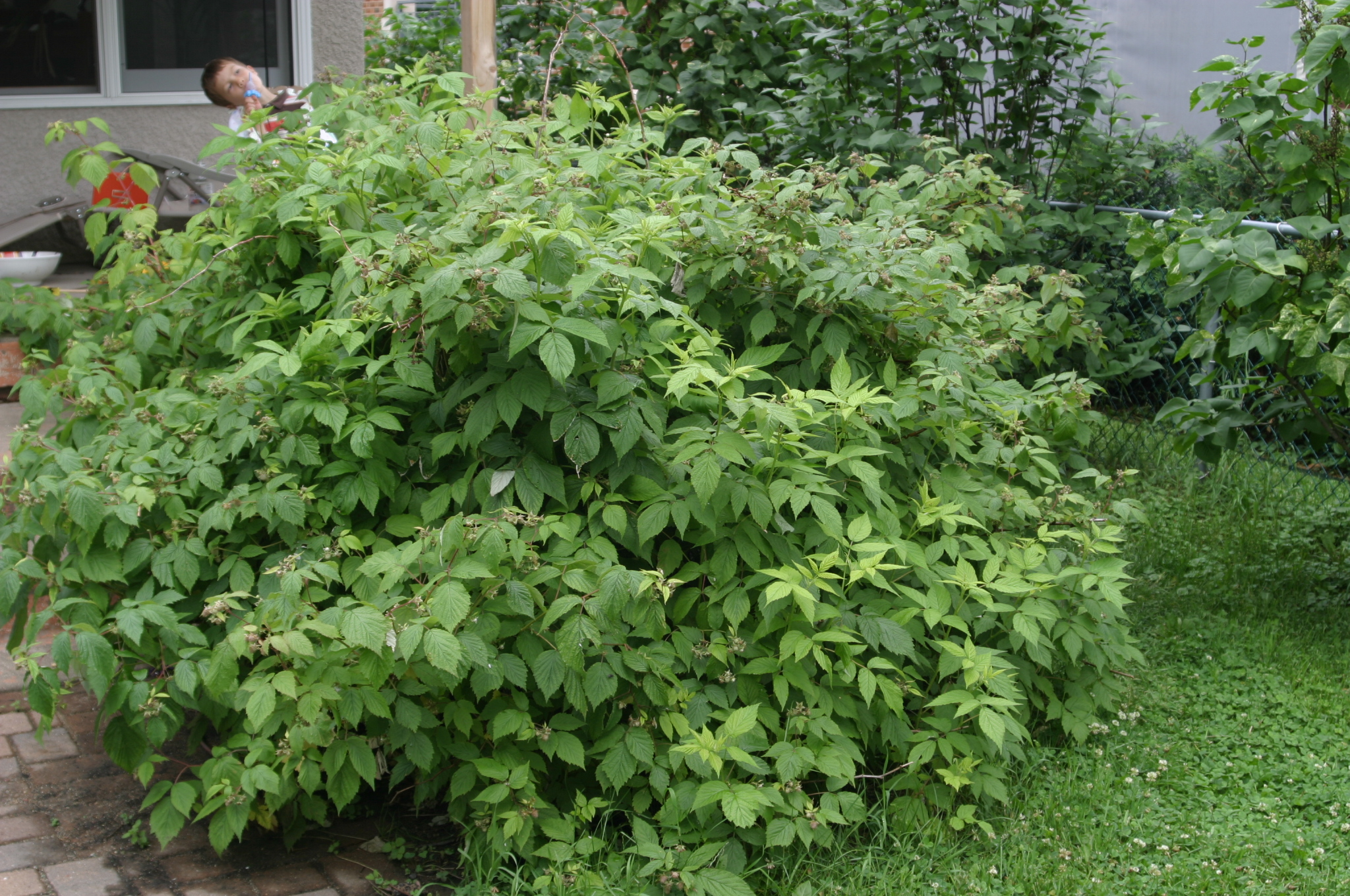 Raspberry Takeover
Raspberry Takeover
The raspberries did the trick and by the end of the summer, the ugly patch of dirt and concrete was fully hidden. It seems like from the moment I planted them in the ground they had plans for a full takeover. By the second year, we were eating raspberries daily. The next year, we had enough to freeze and cook with. Now, during their fourth year, they have spread into probably 50 stalks about five to six feet tall and have spread to encompass their whole corner of the yard. The only thing keeping them at bay is the lawn mower.
As for pests, only chipmunks ever come back with any regularity and they only reach some of the low hanging fruit. We have seen a few frustrated squirrels trying to make sense of the tangle of thorns and branches, but it is nothing compared to what they do to our tomatoes or apples. Plus, I have noticed that raspberry plants attract a ton of pollinators. A major bonus for the rest of the garden.
As for the strawberries, they have turned out to be quite the surprise. I tore up a small section of my yard and planted my ten plants near an egress window wall. At the same time, my mother-in-law, Diana, brought some plants down to the city from their home near Lake Superior and planted a few in the front yard. It was awfully cute and naive of us to think that we could plant a few little clumps of strawberry plants here and there, as if they would stay put and produce one or two berries each, for effect more than food. Three years later, we have over a thousand plants on every side of the house, some are actually growing out of the cracks in our retaining wall and still produce fruit. The little beasts thrive next to our stucco house and near the retaining walls and because of the extra warmth, fruit quite early in the summer.
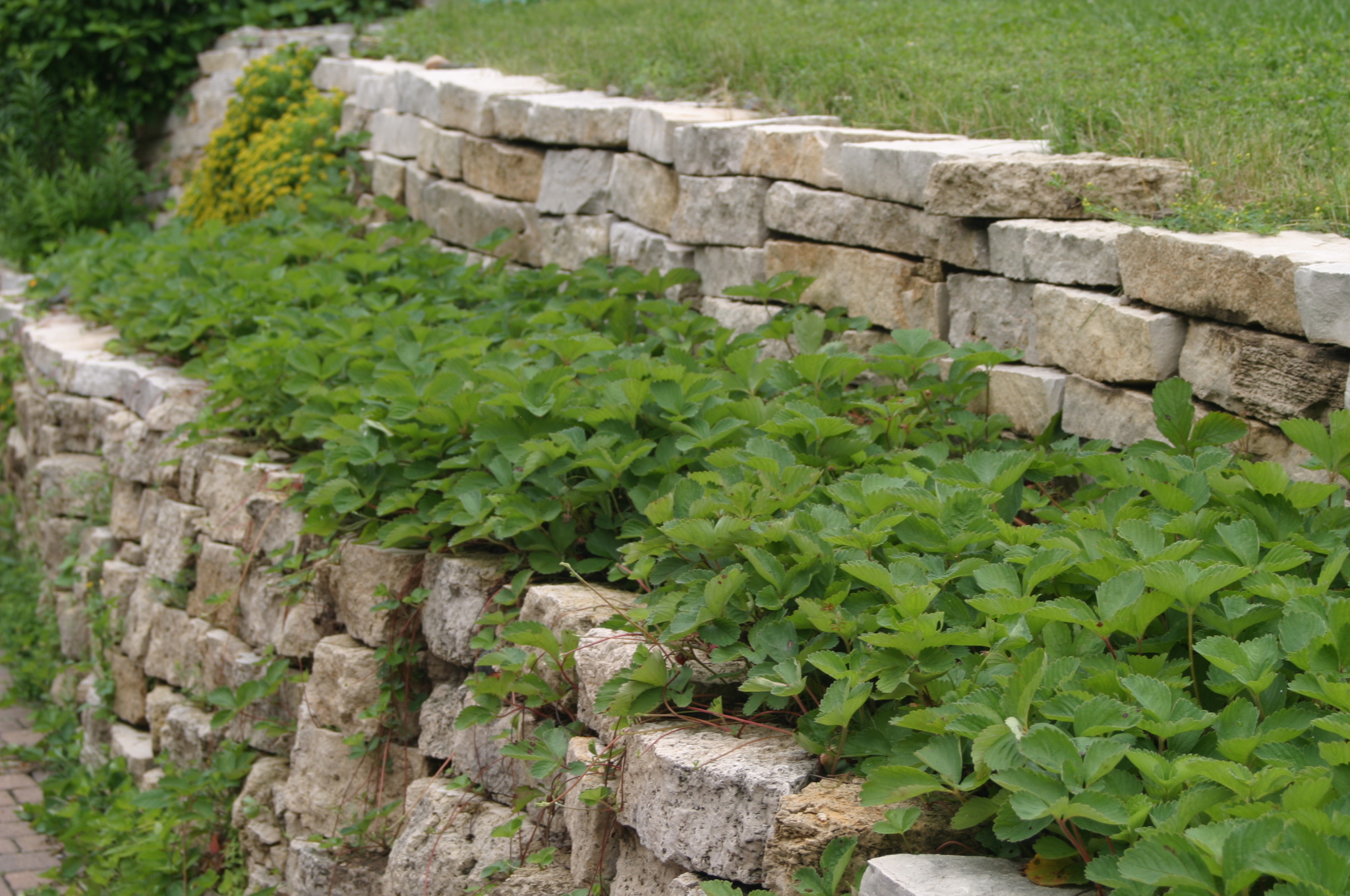 Strawberries Next To The Driveway
Strawberries Next To The Driveway
The retaining wall ended up being a nice surprise. When I built it, I made it in two tiers. This allowed for a garden bed in the middle, which we intended for flowers. However, when the strawberries started taking over, we realized that not only was it beautiful, the way they climb all over, but it is really easy to harvest the plants at this height. No bending or stooping, the berries are right at waist level!
For care, we simply add compost to the soil every few years. There is little weeding to do because they tend to crowd out everything around them. As for pests? I'm not sure why they are not being gobbled up. Perhaps it is because of their location, next to the house or driveway? I really have no idea. All I know, is that this year we picked over five gallons of strawberries, all of which were either gobbled up immediately or turned into fresh sauce or used in a crisp. Does that mean we stop buying them at the farmers market? No way. It simply means that the flats we buy from the market can go into our freezer so that we do not have to buy strawberries from the grocery store all winter long. No matter how good they look, the strawberries that come from Mexico or California are never that good by the time they get here.
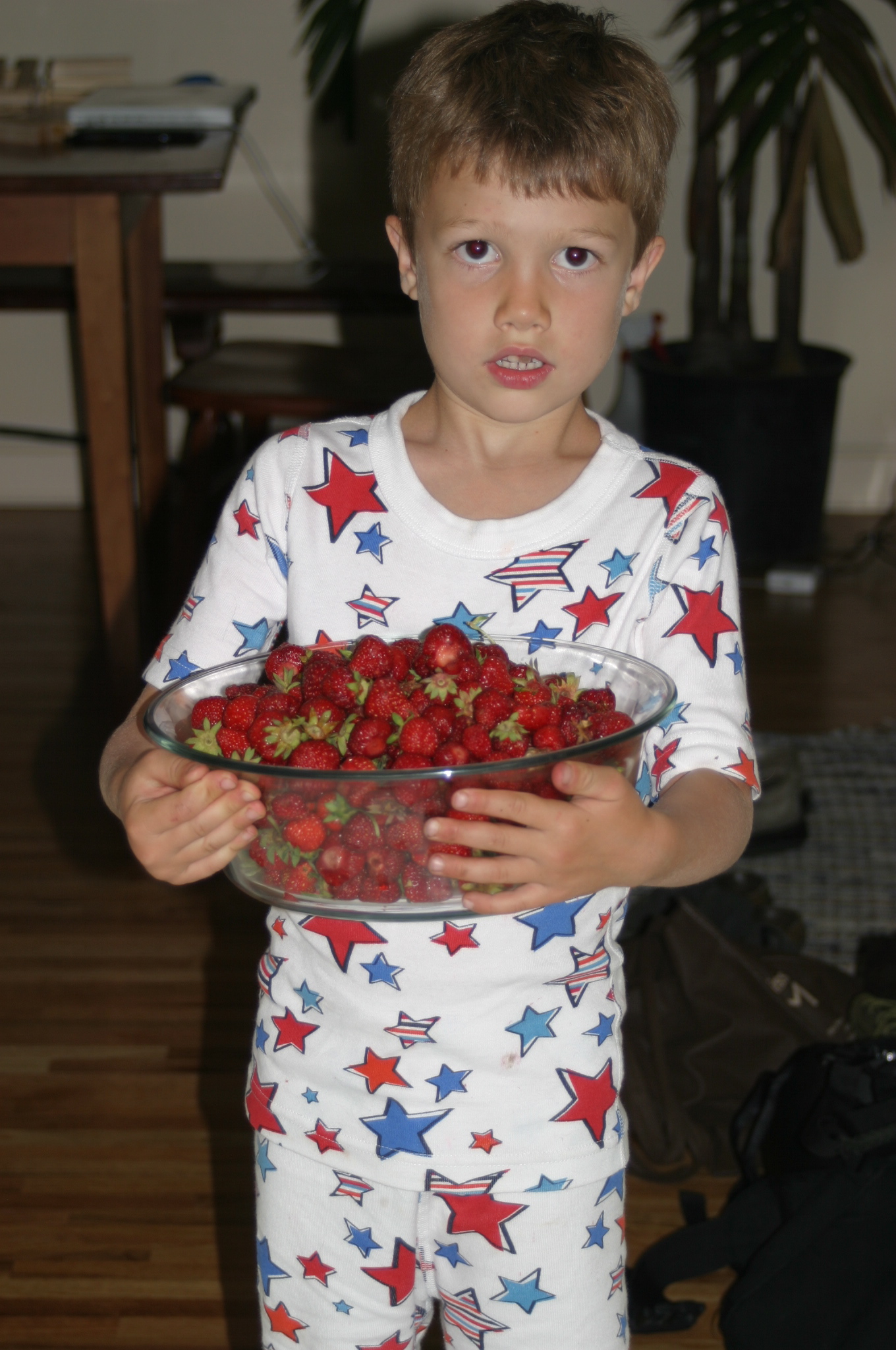
Did our success stop with raspberries and strawberries? That is not really how this family operates. If something works, we want to do it again, and then some. The next direction we took involved trees. Our yard was pretty bare when we moved in and it seemed only natural to not just plant trees, but ones that would bear fruit. We put a Canadian Cherry in the front yard and a Honeycrisp Apple tree in the backyard.
The Canadian Cherry tree is a beautiful tree with dark green, glossy leaves and a rich, reddish brown bark. It is especially hardy in northern climates and produces the most wonderful sour cherries. Tons of them. They are the type that you just want to sit and watch people eat off of the tree. Their faces go all crazy with sourness and surprise, but they usually eat more. They are the perfect cherry for tarts, pies, jams and they freeze well. Not much seems to eat these except for the occasional bird stopping for a snack.
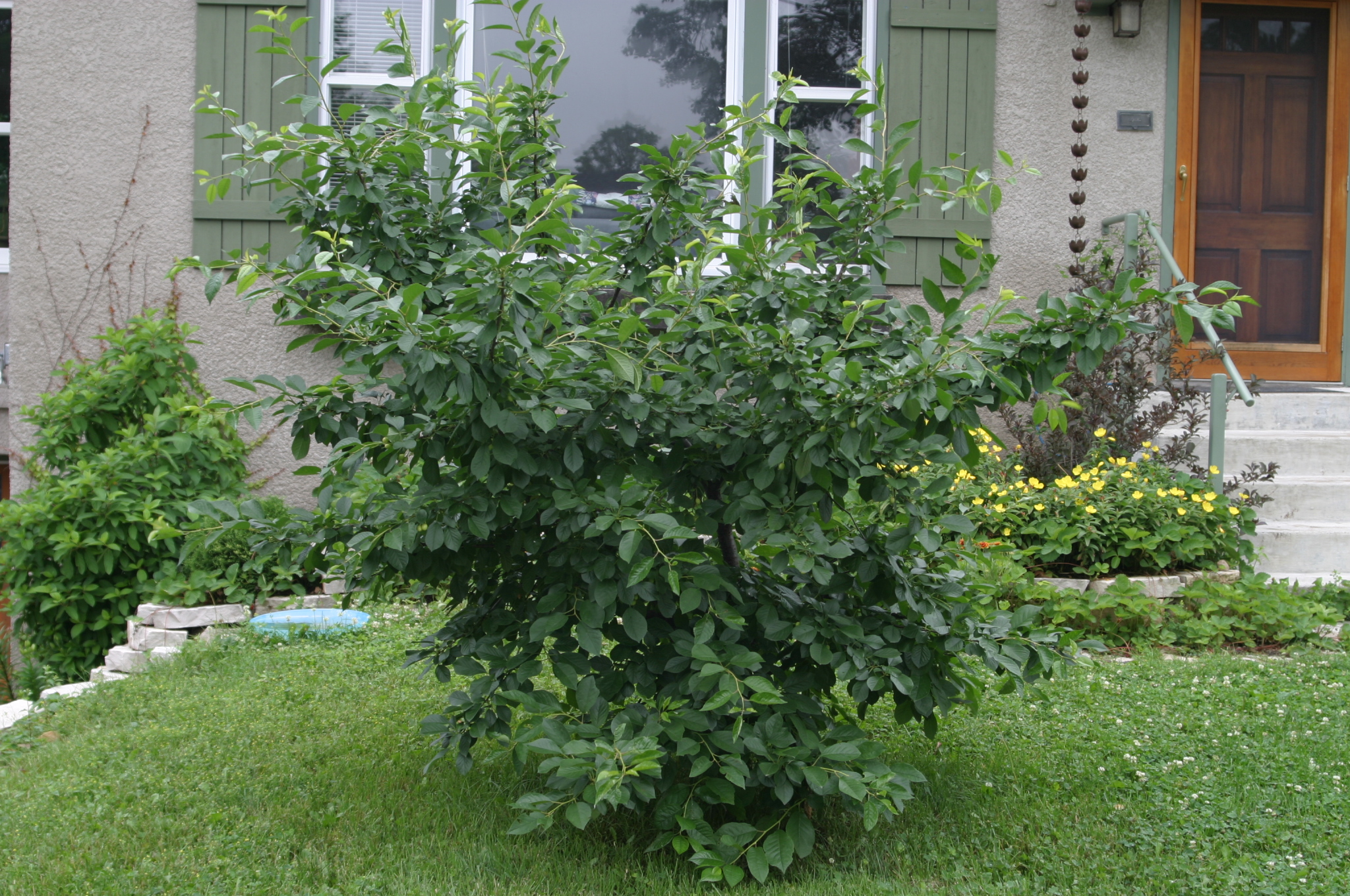 Our Canadian Cherry Tree
Our Canadian Cherry Tree
The Honeycrisp Apple tree has been the biggest challenge. Ever since we planted it, the amount of apples it puts out is ridiculous. This is the main problem, but a serious one. An apple tree, especially a young one overburdened with fruit can be at great risk. There are too many apples and they get huge. If we don't thin out the apples enough, the branches get ripped right off on a windy day. I learned this the hard way, the second year of the tree being in our yard. I simply could not believe the amount of apples. I tried to thin them out, but it felt wasteful to be taking off all of that fruit. Halfway though the season, branches started to break under their burden and I quickly had to thin out the apples even more to save the tree.
This is also the one fruit that the squirrels seem to fancy. One year they took maybe half of the 30 apples. The following year we had a bumper crop. After thinning, it looked like we would have fifty apples from one little tree, but then in the course of one week, the squirrels took every single apple off of the tree. It was July and they were not even close to ripe. This year, we have a big decision to make. How do we fight this squirrel problem. We could wrap the tree in netting, but the success of this method is still up for debate. The possibility of getting a dog has come up. The squirrels stay clear of our neighbors house whether or not the dogs are outside. Of course then we run the risk of a dog running wild through the vegetable garden. Most of the neighbors frown upon firearms and I'm not a fan of poisoning anything. Perhaps we offer up the apple tree as a sacrifice to the squirrel gods and just give thanks that they have let us keep the strawberries so far. Best not to anger them perhaps.
The question I cannot stop asking is, "what next?" It is a dangerous question. I start thinking about trying to requisition some of my neighbors yard or giving up a lawn all together to plant rows of blueberries. I am thinking seriously about a mulberry tree. They remind me of being a kid, those messy, messy, sweet berries, but mulberry trees get really big. That means planning way ahead, something that would be new to my way of thinking about gardening and landscaping. In the end, perhaps it is best to just sit back and be grateful for what I have...but wait, I don't have grapes yet...ummmm, I have to go. I'll let you know how the wine turns out.
Can't get enough? Here are a couple more great articles about growing fruit:
And another about an interesting movement called Fruit Gleaning:

Lawrence Black is a writer, managing editor and owner of Simple, Good and Tasty. He can be reached at lawrence@simplegoodandtasty.com.

